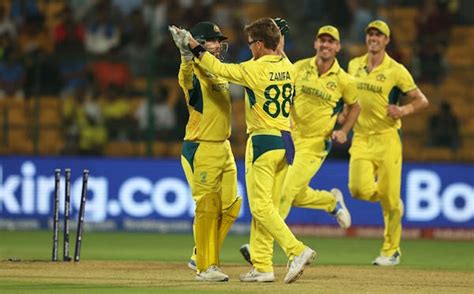Explore essential cricket coaching fundamentals, effective communication skills, training plan development, technology integration, and success measurement for aspiring coaches and players.Cricket is more than just a game; it’s a passion that unites enthusiasts around the world. For aspiring coaches, the journey to cultivate the next generation of cricket talent can be both exciting and challenging. Cricket Coaching Tips For Aspiring Coaches is designed to equip you with essential insights and strategies to enhance your coaching abilities. This comprehensive guide will delve into the fundamentals of cricket coaching, the importance of effective communication skills, and the development of tailored training plans. We’ll also explore how to leverage technology to improve coaching techniques and provide methods for measuring the success of your coaching programs. Whether you’re starting your coaching career or looking to refine your skills, this article serves as an invaluable resource to help you thrive in the dynamic world of cricket coaching.
Understanding The Fundamentals Of Cricket Coaching
To excel in Cricket Coaching, it’s essential to grasp the fundamental principles that underpin the sport. This foundation not only enhances your coaching abilities but also empowers your players to develop their skills effectively.
First, understanding the rules and regulations of cricket is crucial. Familiarity with the game’s structure, including formats like Test matches, One Day Internationals, and T20s, allows coaches to tailor their training and strategies to different environments. Coaches should also understand the various roles within a team – whether it be batsmen, bowlers, or all-rounders – as this knowledge aids in focusing player development appropriately.
Second, developing an awareness of the physical and mental aspects of cricket is vital. Coaches should encourage physical fitness, agility, and endurance, as these traits significantly impact performance on the field. Additionally, nurturing the mental toughness of players is essential; cricket often requires handling pressure and maintaining focus during critical moments.
Third, a solid grasp of fundamental skills such as batting techniques, bowling actions, and fielding drills is imperative. Coaches should create a training environment that emphasizes mastering these skills through repetitive practice and constructive feedback. Encouraging players to practice basic drills ensures they build a strong, competitive foundation necessary for more advanced techniques.
Fostering a sense of unity and team spirit among players enhances their performance. Establishing effective team dynamics includes promoting trust, cooperation, and communication among players. Effective Cricket Coaching involves building rapport and creating an environment where players feel valued and motivated to give their best.
The fundamentals of Cricket Coaching encompass knowledge of the game, physical and mental training, skill development, and promoting teamwork. By focusing on these core areas, aspiring coaches can build a solid foundation for nurturing talent and leading successful cricket teams.
Effective Communication Skills For Cricket Coaches
One of the essential qualities of a successful cricket coach is the ability to communicate effectively. Communication is not just about giving instructions; it’s about fostering understanding and creating a positive learning environment for the players. Here are some key aspects of effective communication skills that aspiring cricket coaches should focus on:
- Clarity: Coaches must convey their messages clearly and concisely. Avoid jargon that players may not understand. Always aim to simplify complex concepts.
- Active Listening: It’s crucial for coaches to listen to their players. This helps in understanding their concerns, questions, and feedback, which can inform better coaching strategies.
- Positive Reinforcement: Use positive communication to build confidence in players. Acknowledging their strengths and progress can motivate them to improve further.
- Body Language: Non-verbal communication plays a significant role in coaching. A coach’s body language can convey enthusiasm, support, and confidence. Be mindful of gestures, facial expressions, and posture.
- Constructive Feedback: Offering feedback is critical in cricket coaching. Ensure that your feedback is constructive, specific, and focuses on improvement rather than criticism.
- Adaptability: Different players respond to different communication styles. Be prepared to adapt your approach based on the individual needs and personality of each player.
By honing these communication skills, cricket coaches can not only enhance their coaching effectiveness but also foster strong relationships with their players, ultimately leading to a more successful and enjoyable cricket coaching experience.
Developing Training Plans For Aspiring Cricketers
In cricket coaching, having a well-structured training plan is essential for nurturing the skills of aspiring cricketers. A solid training plan not only enhances player performance but also keeps them motivated and engaged. Below are key elements to consider when developing effective training plans.
1. Assess Player Skill Levels
Begin by evaluating the current skill levels of each player. This includes understanding their strengths and weaknesses in various areas such as batting, bowling, and fielding. Use performance metrics and drills to gain insight into their abilities.
2. Set Clear Objectives
Define specific, measurable, attainable, relevant, and time-bound (SMART) objectives for each training session. Examples include improving batting average, increasing bowling speed, or enhancing fielding accuracy.
3. Create a Balanced Schedule
Incorporate a combination of skill development, fitness training, and tactical sessions. For instance:
| Day | Focus Area | Activities |
|---|---|---|
| Monday | Batting | Net sessions, throwdowns, and drills |
| Tuesday | Bowling | Target practice, wicket simulation |
| Wednesday | Fielding | Aggressive catching, ground fielding drills |
| Thursday | Fitness | Endurance drills, agility workouts |
| Friday | Tactical Gameplay | Match simulations, strategy discussions |
4. Implement Drills and Exercises
Choose appropriate drills that target specific skills. For example, for batting, use drills that focus on footwork, shot selection, and timing. Regularly update these drills to keep players challenged.
5. Incorporate Feedback Mechanisms
Continuous feedback is crucial. Use video analysis, peer reviews, and personal assessments to help players understand their progress and areas for improvement. This approach fosters a deeper understanding of the game and allows players to feel more invested in their training.
6. Ensure Flexibility in Plans
Adapt training plans based on player performance and feedback. Different players may require varying focuses or intensities, so flexibility ensures that all players are both challenged and adequately supported.
7. Foster Teamwork and Cohesion
Encourage collaboration among players, as cricket is fundamentally a team sport. Incorporate team-building activities and collaborative drills that enhance team chemistry and communication on the field.
By focusing on these critical aspects of cricket coaching when developing training plans, coaches can significantly contribute to their players’ growth and success in the sport. The ultimate goal is to not only develop exceptional cricketers but also instill a lifelong love for the game.
Utilizing Technology In Cricket Coaching Techniques
In today’s fast-paced world, Cricket Coaching has evolved significantly with the introduction of various technological advancements. Coaches can now leverage technology to enhance their teaching methods, improve player performance, and analyze game situations more effectively.
Here are some effective ways technology can be utilized in cricket coaching:
| Technology | Application |
|---|---|
| Video Analysis Software | Allows coaches to review players’ techniques and performance, providing valuable feedback for improvement. |
| Wearable Technology | Tracks players’ physical metrics such as heart rate, speed, and movement patterns during training and matches. |
| Online Coaching Platforms | Enables coaches to create and share training resources, drills, and strategies with players remotely. |
| Simulation and Virtual Reality | Creates game-like situations for players to practice decision-making and technique in a controlled environment. |
By integrating these technologies, Cricket Coaching can become more effective, benefiting not only the coaches but also the players. Embracing these innovations allows for a more engaging training experience and better prepares players for real-game scenarios.
Measuring Success In Cricket Coaching Programs
Measuring success in Cricket Coaching programs is essential for understanding the effectiveness of the training and development processes in place. The criteria for success can vary, but several key indicators commonly assess the progress of players and the overall quality of the coaching program.
- Player Improvement: One of the primary measures of success is the improvement observed in players’ skills. This can be evaluated through regular assessments, performance in matches, and the players’ ability to apply what they have learned during practice sessions.
- Player Retention: A successful coaching program typically sees a high retention rate of players. When athletes feel supported and see continuous improvement, they are more likely to remain committed to the program.
- Feedback Mechanism: Collecting feedback from players and parents can provide valuable insights into the perceived effectiveness of the coaching methods used. Regular surveys and open discussion forums can encourage transparency and constructive suggestions.
- Team Performance: The performance of the team in local leagues and tournaments can serve as a barometer for success. A well-coached team that consistently performs well indicates effective coaching strategies.
- Engagement and Participation: High levels of participation during practices and a positive attitude among players are indicators of a successful coaching environment. If players are enthusiastic and eager to engage, it reflects positively on the coaching quality.
- Injury Rates: Monitoring injury rates can also be a measure of coaching success. A good coach emphasizes safety and proper techniques, thus minimizing the risk of injuries.
Overall, in the realm of Cricket Coaching, success is not solely defined by wins and losses, but rather by the holistic development of players and the environment fostered by coaches. By implementing these measurement strategies, coaches can continuously refine their methods and enhance the experience for their players.
Frequently Asked Questions
What are some essential qualities of a good cricket coach?
A good cricket coach should possess strong communication skills, a deep understanding of the game, patience, and the ability to motivate players.
How can aspiring coaches improve their knowledge of cricket?
Aspiring coaches can improve their knowledge by studying cricket tactics, attending coaching clinics, watching professional matches, and obtaining relevant certifications.
What role does physical fitness play in cricket coaching?
Physical fitness is crucial as it ensures that both coaches and players can demonstrate skills, manage rigorous training sessions, and reduce the risk of injury.
How important is it to know various playing techniques?
Understanding various playing techniques is vital as it allows coaches to tailor their coaching methods to each player’s strengths and weaknesses.
What are effective ways to motivate young players?
Effective ways to motivate young players include setting achievable goals, providing positive feedback, fostering a supportive team environment, and incorporating fun into training.
How can a coach assess a player’s progress?
A coach can assess a player’s progress through regular performance reviews, keeping track of statistics, observing skill improvement, and soliciting feedback from the player.
What considerations should a coach have when planning a training session?
When planning a training session, a coach should consider the players’ age and skill levels, focus on specific skills, incorporate variety in drills, and ensure adequate breaks.









